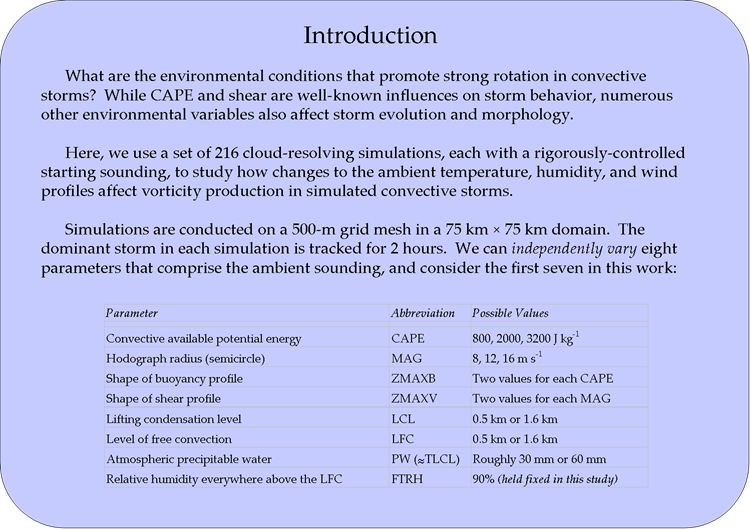
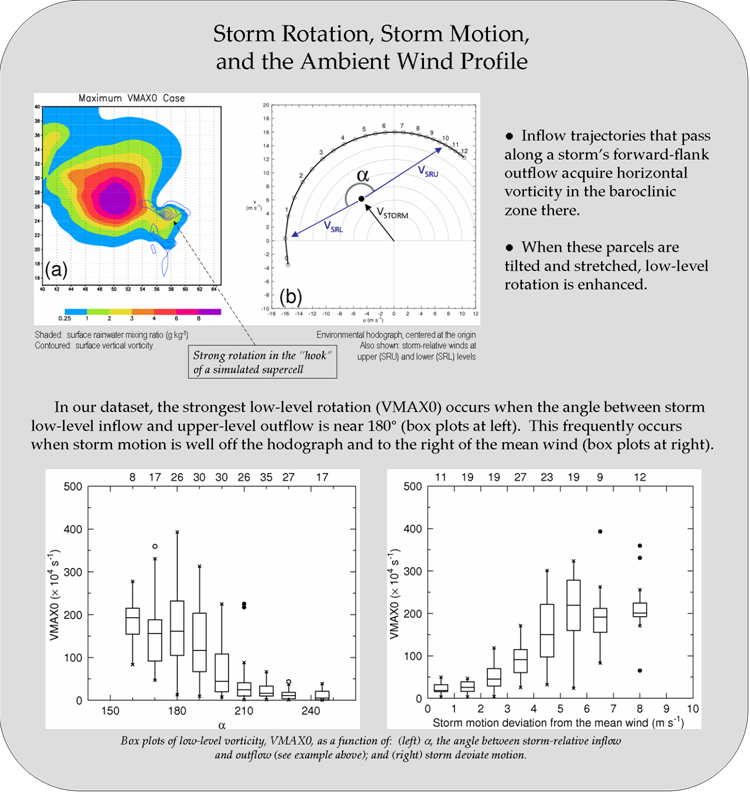
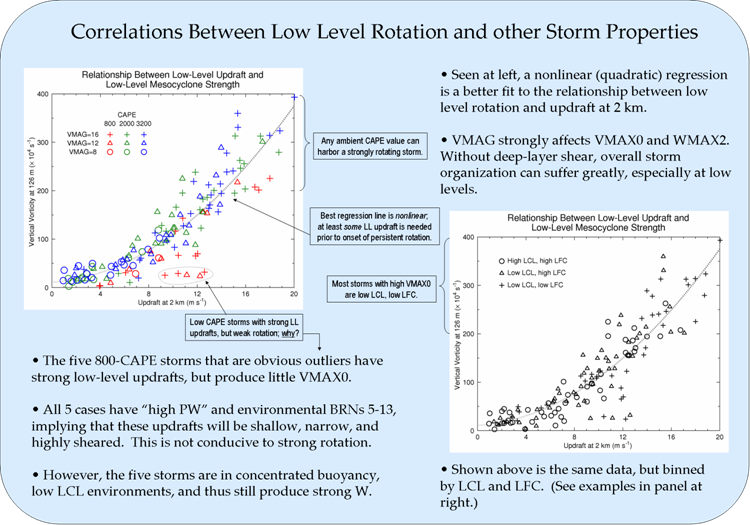
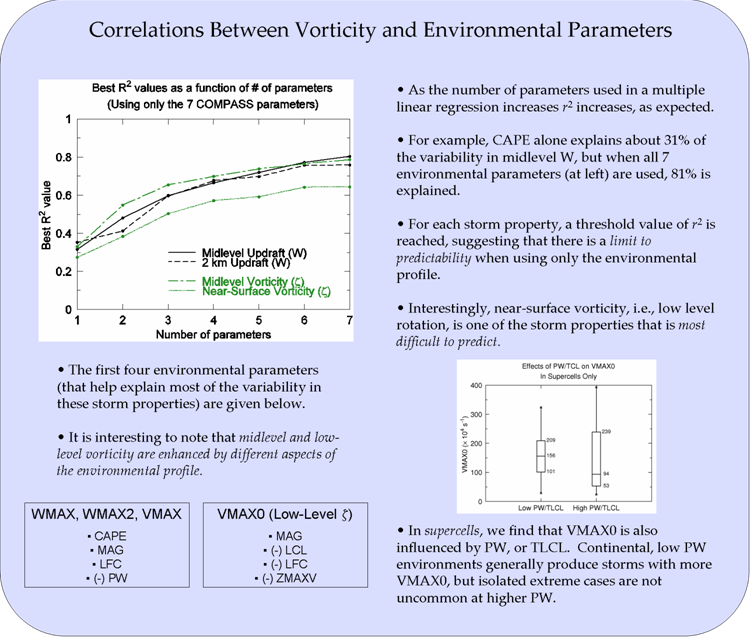
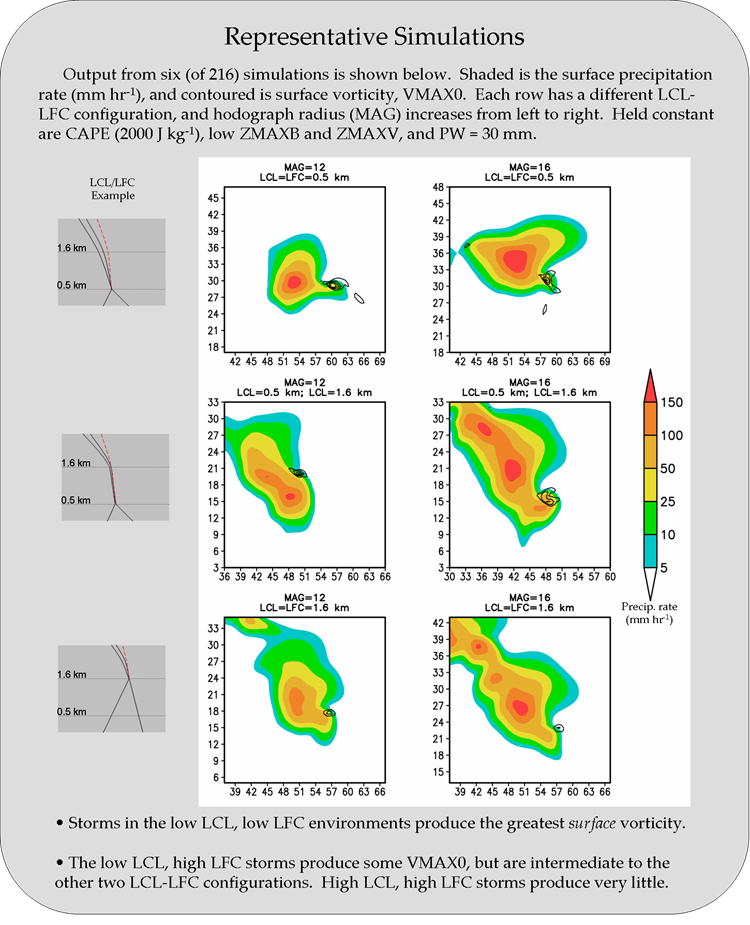
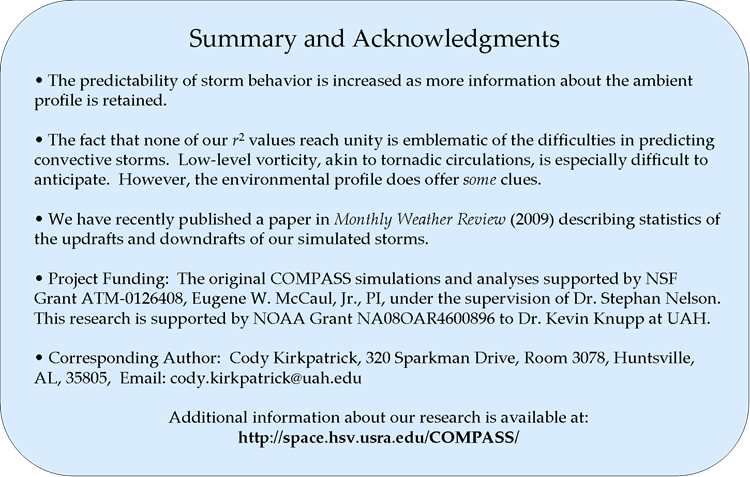
Environmental Influences on Vorticity Production in Simulated Convective Storms
Cody Kirkpatrick and Euguene W. McCaul, Jr.
Poster presentation at the 2009 AGU Fall Meeting, abstract A13I-0079.
Submitted Abstract
This paper explores the influence of basic environmental parameters on mid-level and low-level vorticity production in a large set of simulated convective storms. Results show that the primary environmental conditions that increase midlevel vorticity are: substantial deep layer tropospheric wind shear; large amounts of convective available potential energy (CAPE); and a high level of free convection (LFC). These conditions are, to a significant degree, the same as those that enhance updraft velocity. About 79% of the interexperiment variance in midlevel vorticity can be attributed to the seven environmental parameters studied herein, when combined in a multiple linear regression form. Vorticity amounts near the surface are explained less well (64%), and are again correlated with stronger wind shear, but, contrary to vorticity aloft, with lower lifting condensation level (LCL) and LFC heights. Near-surface vorticity is also found to correlate strongly with low-level updraft intensity, but in a distinctly nonlinear sense. CAPE and its vertical distribution also explain much of the intra-experiment (temporal) variability in midlevel vorticity that is observed. This paper offers evidence suggesting that studies of convection that focus exclusively on the CAPE-shear parameter space may be unable to explain some important relationships between a storm's rotational characteristics and its environment.This is a low-resolution reproduction of all the panels on the poster. If you would like to examine any of the figures in more detail, please email me at the link on the previous page for a copy.





